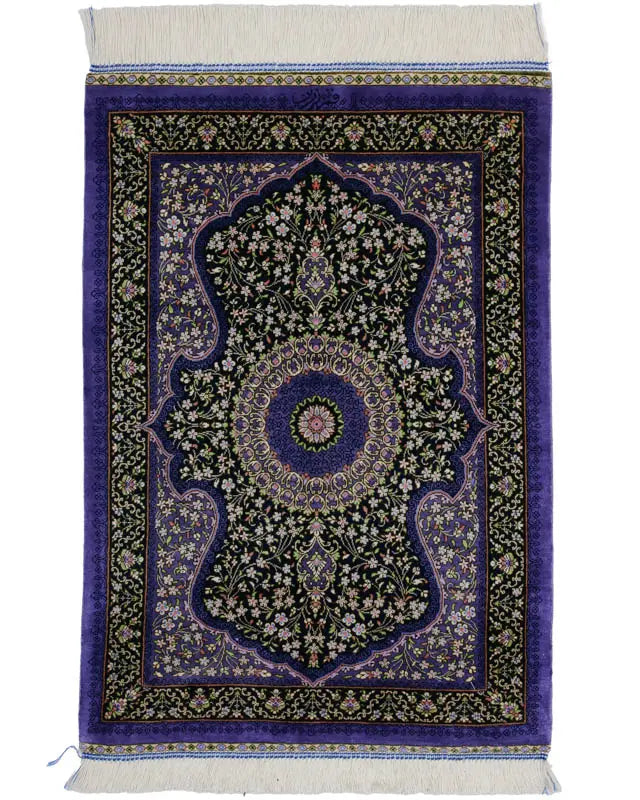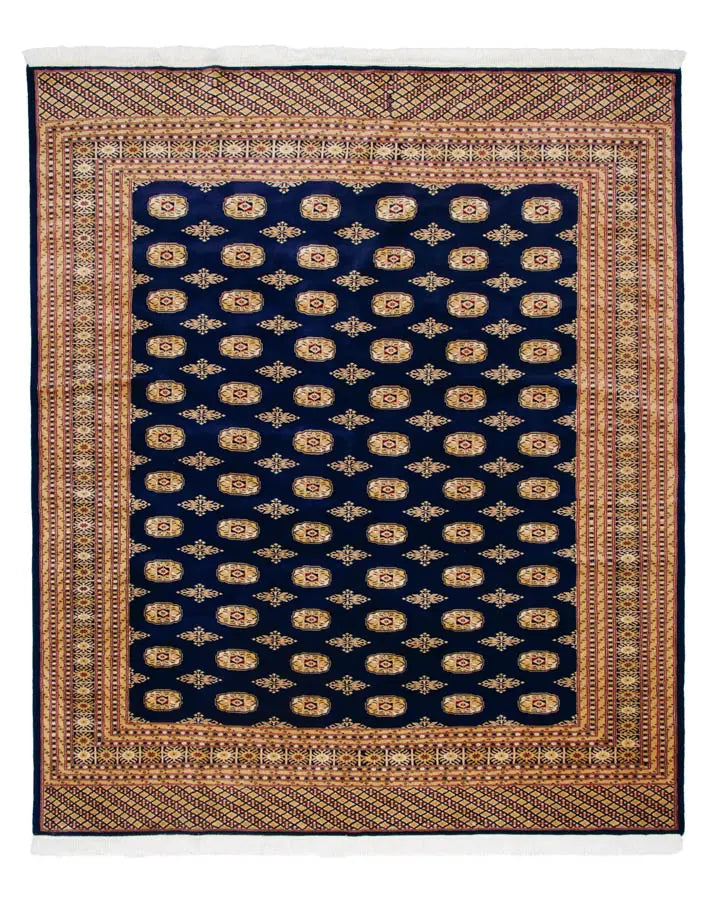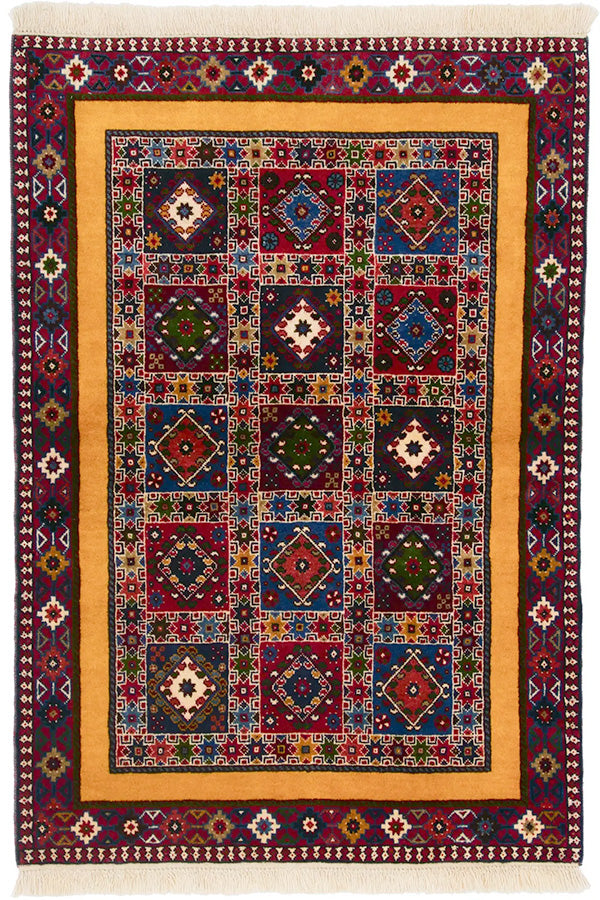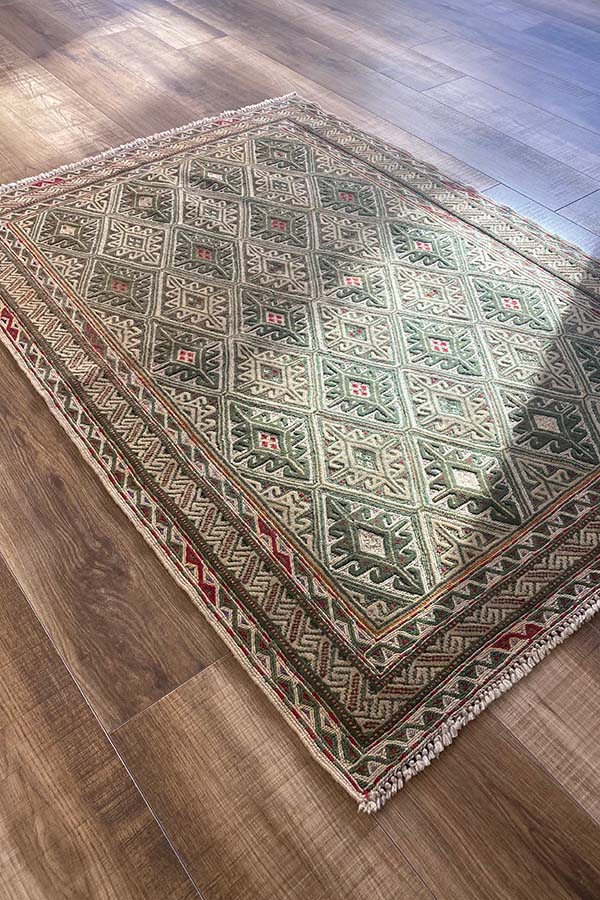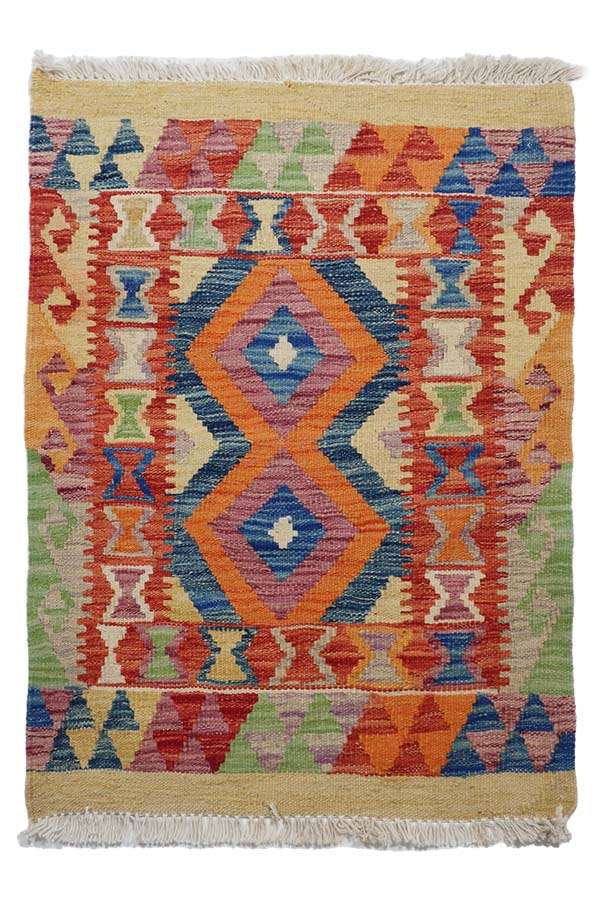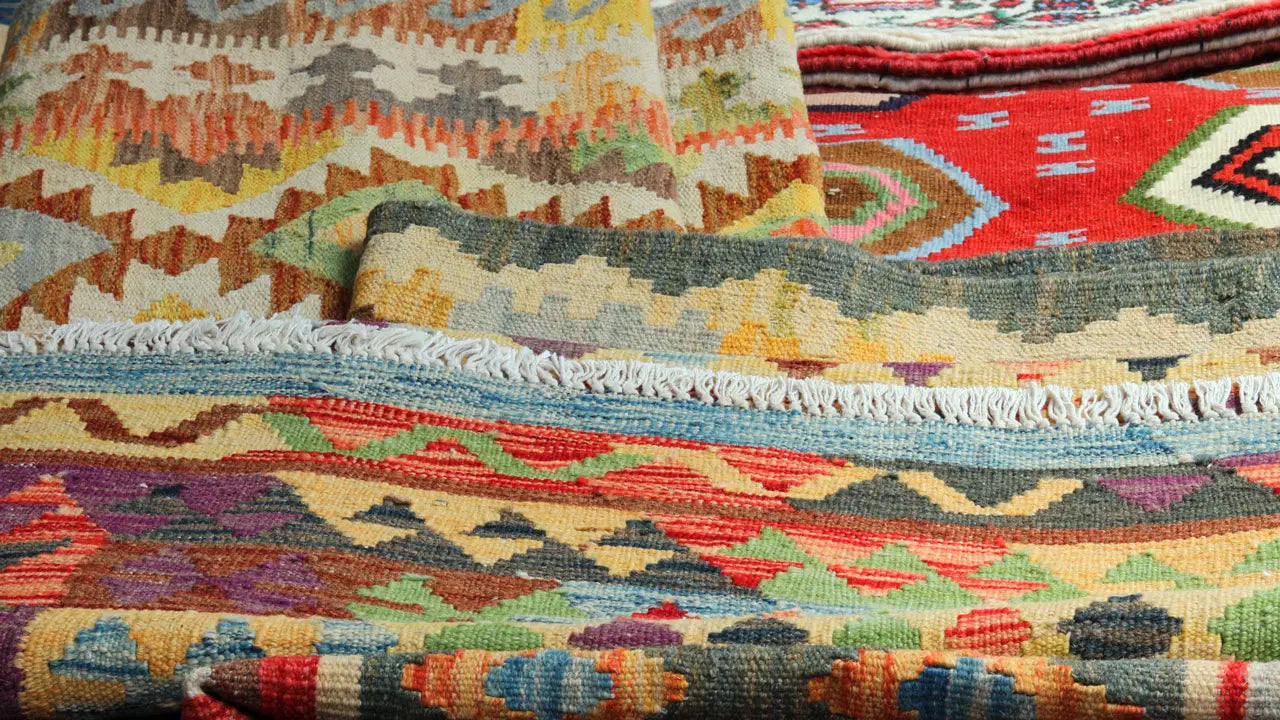
Kilim
Type: Hand-woven carpet
Location: Afghanistan, Türkiye, Iran
Characteristics: Colorful and geometric patterns
In Turkish, the word "kilim" refers to a flat-woven rug with no pile. These types of rugs are widely produced in regions such as Turkey, North Africa, the Balkans, the Caucasus, Iran, Afghanistan, Pakistan, Central Asia, and parts of China.
The main difference between kilims and pile rugs lies in their construction—kilims have no pile and are created by interweaving colorful weft and warp threads. Most kilims are made using the slit-weave technique, in which the weft threads of different colors do not interlock, leaving a small gap (slit) at the color boundaries. This creates bold, defined patterns. The weaver packs the weft tightly to cover the warp, often using diagonal lines and geometric or floral motifs.
Kilims are not limited to floor coverings—they are also used as wall hangings, furniture covers, bags, and cushion covers. Wool is the most common material due to its flexibility and durability, but cotton, goat hair, camel hair, and even horsehair may also be used. Silk is occasionally incorporated as a luxury material.
Kilim weaving involves tools such as a loom, beating comb, shuttle, and knives or scissors. Traditional motifs and symbols are often woven into the fabric, reflecting regional cultures and beliefs. One unique feature of kilims is that the front and back are identical, allowing them to be used on either side.
